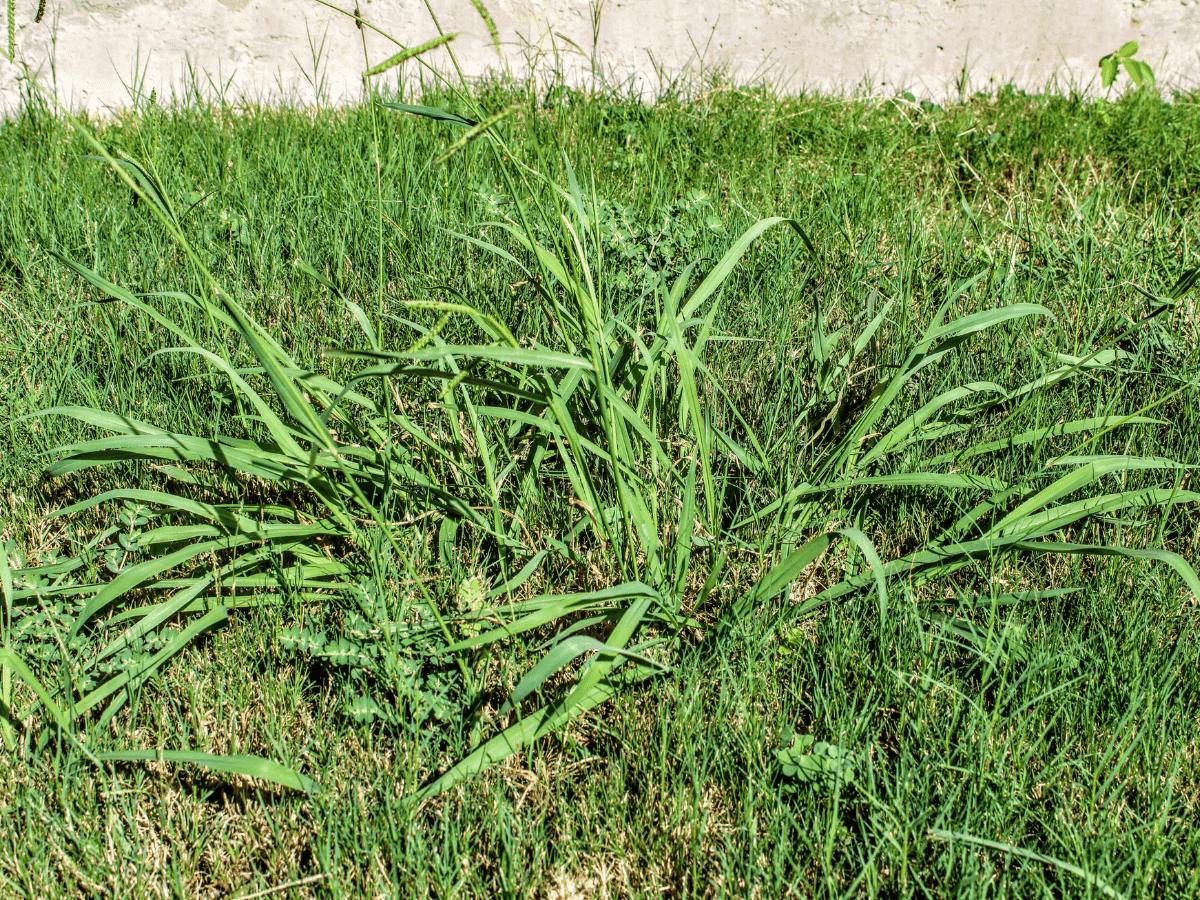🌱 What Does Crabgrass Look Like?
Crabgrass is an annual strain of wild grass (a new plant will grow from seed each year). Seeds travel on the wind and are transported by animals. Once in the ground, the seeds lie dormant until conditions are right for germination. Summers like 2020 had ideal conditions to create a bumper crop of crabgrass which can be hard to get rid of!
There are two varieties of crab grass commonly found in Ontario, Canada that lawn experts have to deal with. Large, or hairy crabgrass (Digitaria sanguinalis) and small, or smooth crabgrass (Digitaria ischaemum). Both are recognizable by their broad, pointed leaves that grow from a common stem.
Crabgrass germinates when soil temperatures are above an average 12.8°C consistently. Typically in the Greater Toronto Area, we encounter most crabgrass growth from July through September. Because of the need of warmth, and the way the seed spreads by blowing along hard surfaces; crabgrass typically first appears along the edges of driveways and other paved areas.
🌱 How Does Crabgrass Spread?
Crabgrass seeds have been known to remain in soil for easily up to 15 years and normally blow down along the street resting near curbs and driveways until the seed has the right amount of soil contact, heat, and water.
🌱 Looking for a Crabgrass Killer in Canada?
There is not currently any effective, selective treatment for actively controlling growing crabgrass. Because it is a type of grass, it is difficult to develop a treatment product that would work well as a crabgrass killer but does not also affect desirable varieties.
However, there are several things that can be done to reduce the amount of crabgrass you get in the future.
As an “Annual” plant, crabgrass dies at the end of the year after frost, and a new plant grows from seed the next year. But before the crabgrass plant dies, each plant, depending on its size, can drop a minimum of 150-125,000 seeds which can lie dormant for years. So getting rid of crabgrass is all about preventing as much seed from developing, and growing on the lawn as possible.

Note the overlapping blades on the right. Crabgrass is known for growing in bare patches at the edge of a lawn.
How To Get Rid of Crabgrass: Removal & Prevention
Here are some tips from the grass experts at LawnSavers for preventing the spread of crabgrass:
- Manually pull as much crabgrass as possible before seed heads develop and mature
- Crabgrass growing on hard surfaces like interlock or between stones can be destroyed with horticultural vinegar
- Mow frequently and bag all clippings to capture seeds. Raking prostrate crabgrass tillers before mowing to stand them up will improve results
- Rake out dead plants along the edge of driveways early in spring to prepare for seeding with desirable grasses varieties
- Thicken the lawn with Liquid Aeration and OverSeeding to reduce thin or bare areas to crowd out the crabgrass
- Let the lawn grow to two and a half or three inches tall to shade the soil and reduce the amount of sunlight and warmth that reaches dormant crab grass seeds
- Water deeply, at least once a week, to strengthen desired grass and minimize surface moisture that crabgrass seeds need to germinate
- If you are not planning to seed the lawn, apply corn gluten meal in the spring. It can help, but will not eliminate crabgrass development (it is a good fertilizer also)
Corn gluten meal can be used to create a barrier on the surface of the grass which helps to limit seed establishment. If you are considering this treatment, be aware of false claims that it will completely kill crabgrass, know its limitations and be patient. Corn gluten meal (in best case scenarios) can prevent up to 40% of crabgrass germination but will have the same effect on desirable grass seeds, and will take up to three years for protein levels to become established in the soil.
Why Choose Us To Help You Deal With Crabgrass in Your Yard?
Looking for assistance with crabgrass control? Wanting to get rid of crabgrass on your lawn? Here is what David Lam had to say about our service on Google:
“Last season, I made the smart decision of having LawnSavers care for my yards. After spending the last couple of seasons caring for my own yards, I realized that I spent a lot more time and money compared to what LawnSavers provided me. Not only did I save money, my grass looked wonderful, had almost no crabgrass and noticed very few weeds. Also, the time I gained back was beneficial. Watering and mowing the lawn was all I had to do! I’m looking forward to my 2015 visits. Oh, I forgot to mention how friendly their staff is, both administrative and field crew. Great prices, great staff and lush green grass! You can’t go wrong!”
Rating: 5/5
Date: 2015-08-23








